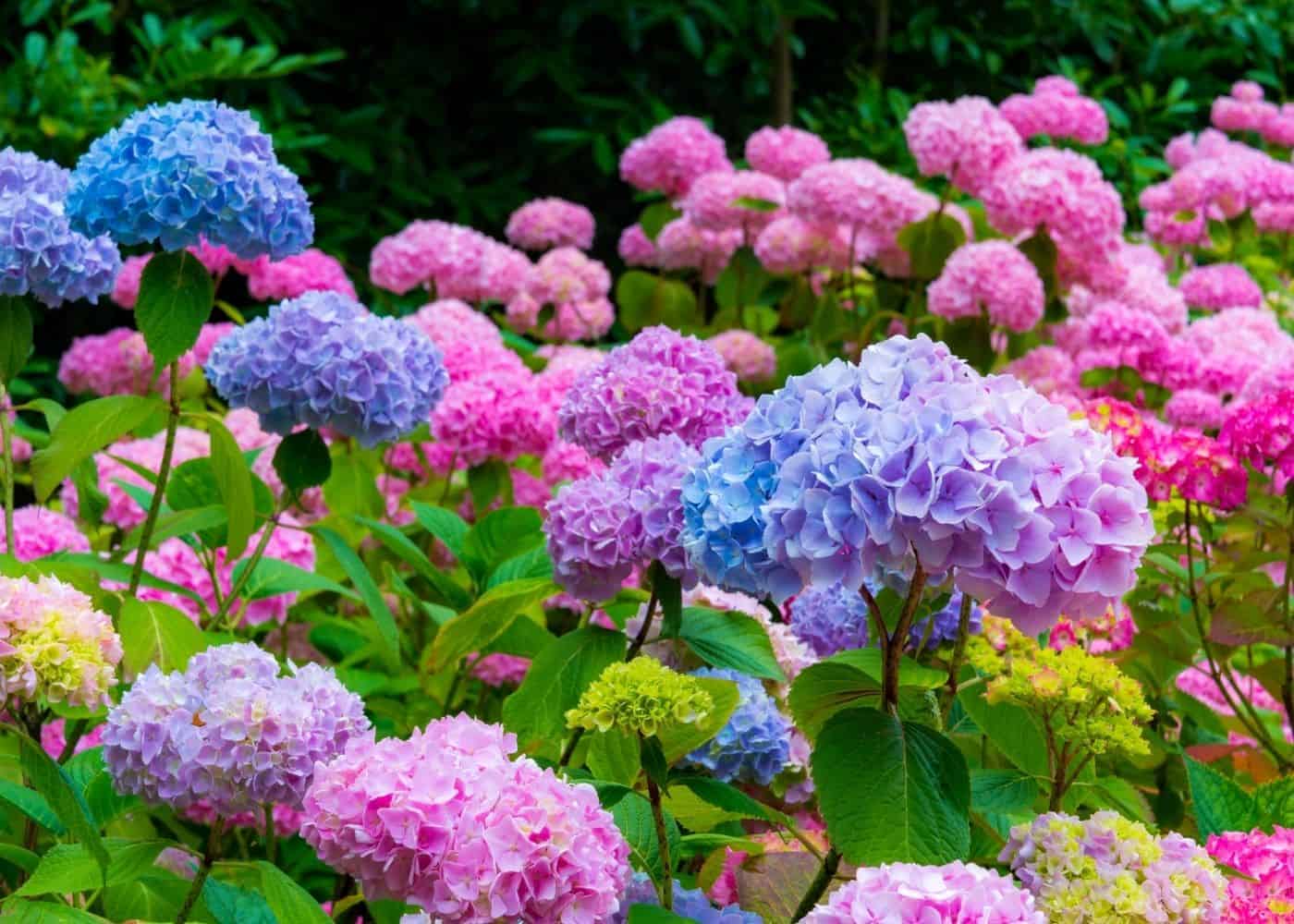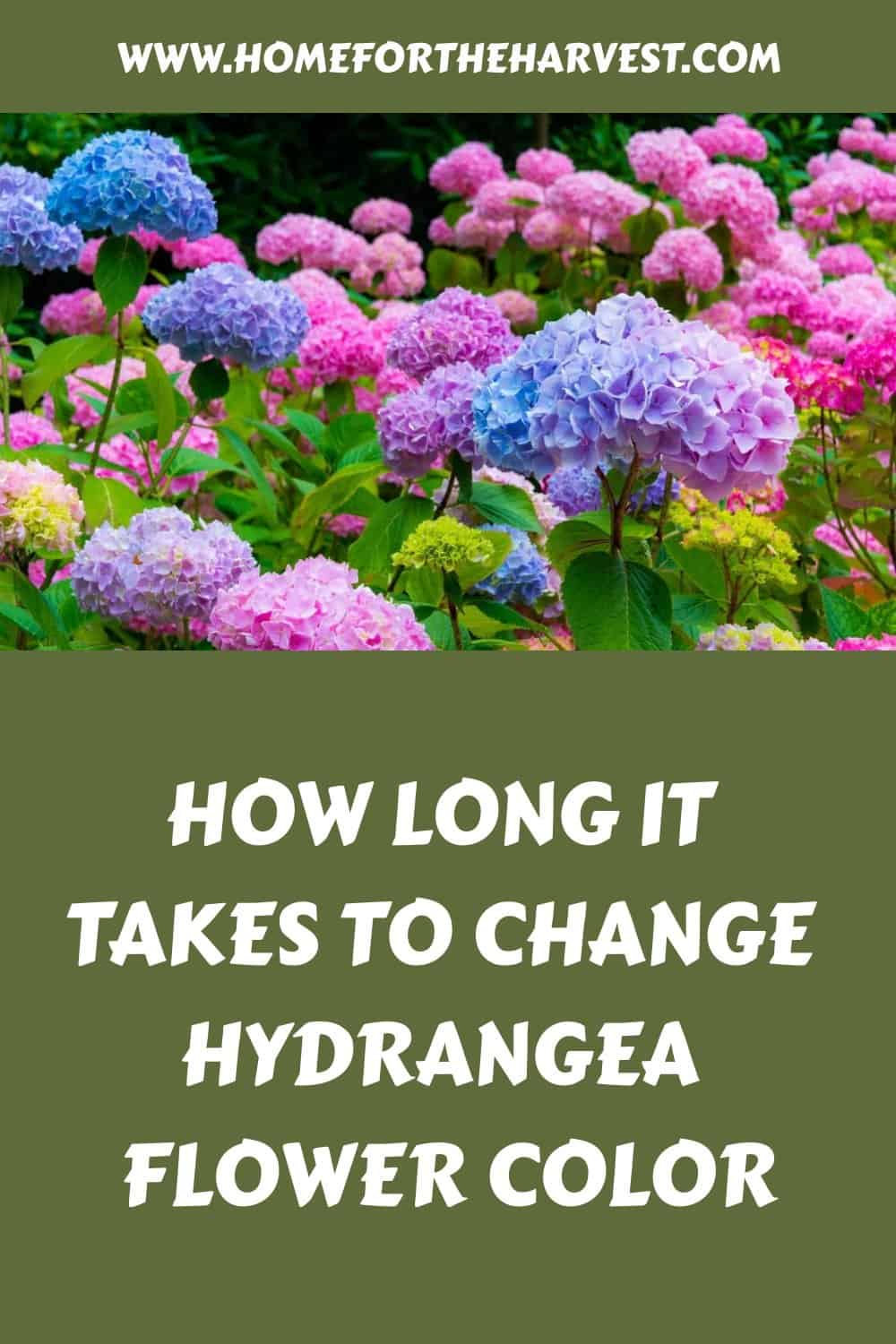It generally takes several months to several years to change the color of hydrangea flowers, depending upon the original composition of the soil and the amount and frequency of amendments added.
In soil that’s already slightly acidic, adding a strong soil acidifier product in the spring and again in the summer may produce deep blue blooms on reblooming varieties by the end of summer. But to get blue hydrangeas in alkaline soil, the process may take several years (or potting the plant up in a controlled container setting).
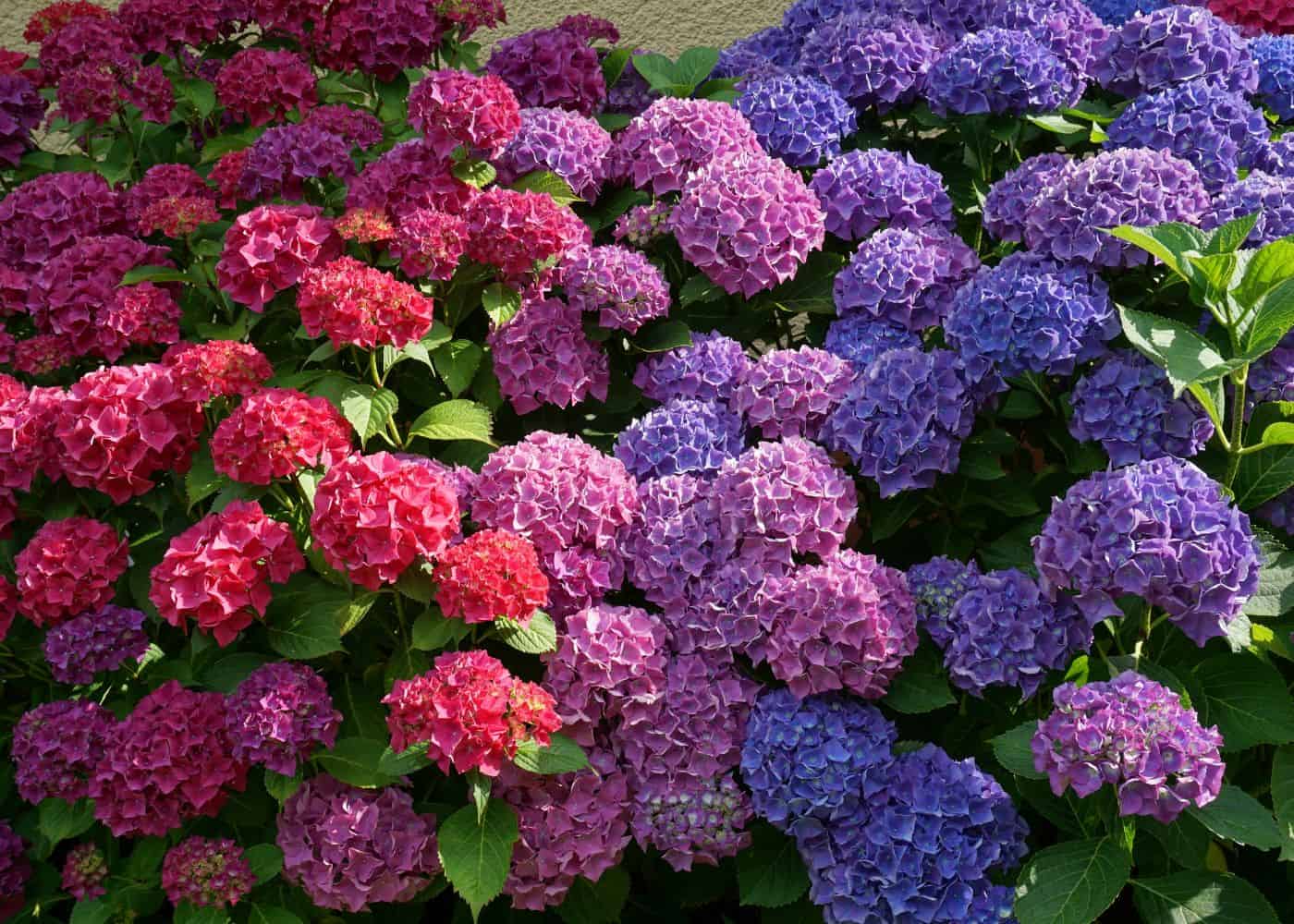
The timeline for changing a hydrangea’s flower color
Changing hydrangea color typically takes anywhere from several months to several years. The rate of change depends upon the original soil composition and the soil amendment added to change it. Making the soil pH more acidic tends to produce blue flowers, while raising the pH above 7 to alkaline tends to have pink flowers.
Most soil pH adjustment products are designed to be applied every 2 or 3 months until the desired soil pH and flower color are achieved. This gradual change is generally done to give you time to observe changes and prevent shock to the plant.
It is much quicker to change flower color in soil that is already nearing an ideal pH or for a plant in a container where the soil composition is easy to control. Plants in non-ideal conditions in terms of soil pH may take several years to approach the desired tone.
Flower color also changes more quickly when the hydrangea plants are healthy. They should have ample water and nutrients for solid color. Some fertilizers even have color-adjusting ingredients mixed in. For example, Espoma Holly-tone is formulated for acidic plants and contains sulfur to lower the pH and make your hydrangeas bluer.
Establishing existing soil pH levels
Before you can change the color of your hydrangeas, it’s important to determine how acidic or alkaline your soil is. The ideal soil pH for blue flowers is 5.5-6.5 in terms of overall nutrient availability. Hydrangeas are usually purple when grown in soil in this range. This ideal range is slightly acidic (a pH of 7.0 is neutral).
For blue flowers, hydrangeas need acidic soil. A soil pH of about 5.0 is a good target for deep blue flowers. This low pH can limit the availability of critical nutrients like nitrogen, so lower the pH with caution. Aluminum is also vital for blue flowers. Consider adding aluminum phosphate and restrict the amount of phosphorus in the soil (as phosphorus will react with aluminum at low pH levels, making it unavailable to your shrubs).
For pink flowers, hydrangeas need neutral to alkaline soil. A soil pH of about 7.0 is a good target for deep pink flowers. Most nutrients are still available at this neutral pH level, but certain minerals like iron and manganese start to become less available as pH increases over about 7.5 or so.
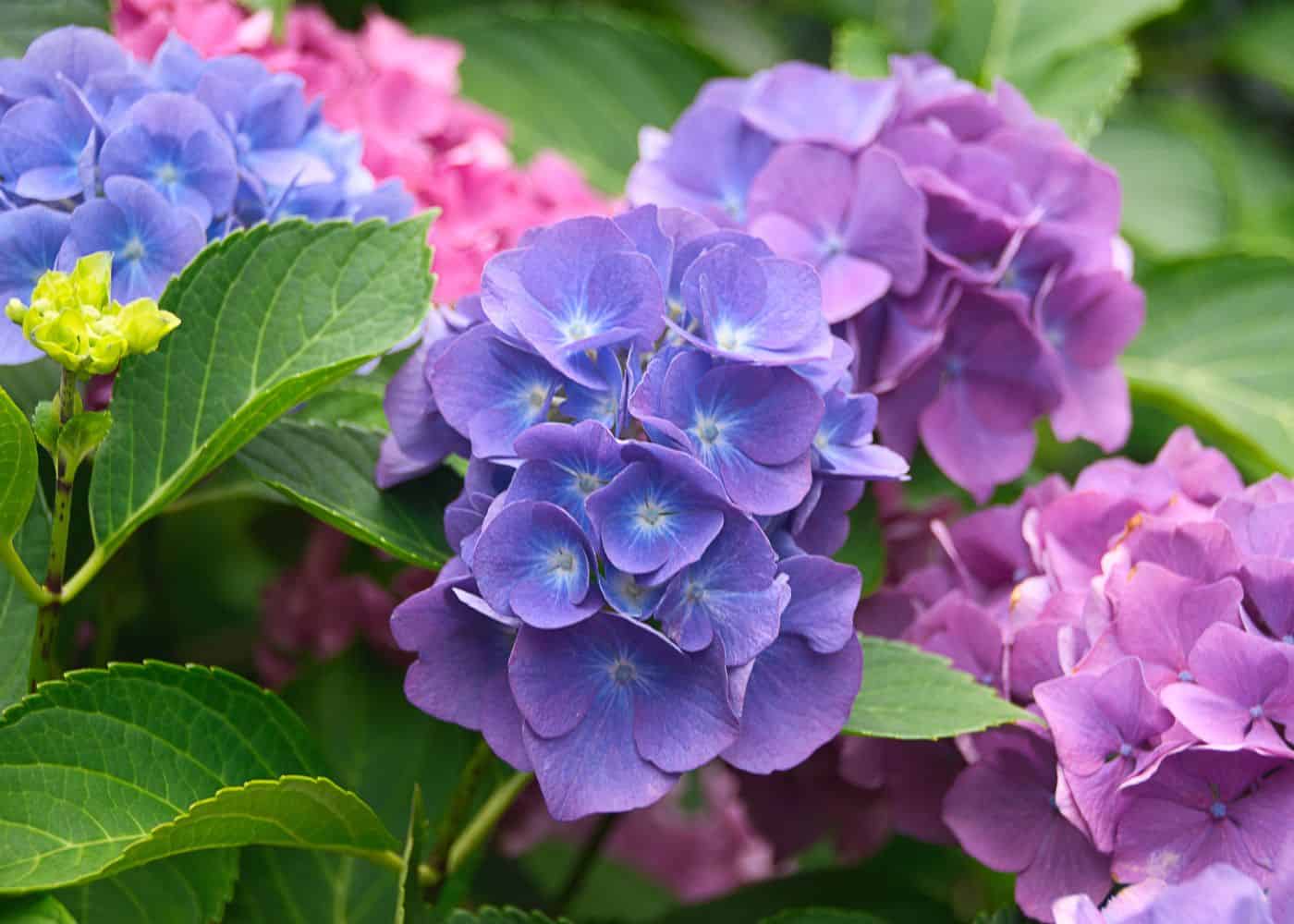
How to change hydrangea color over time
The time required to change hydrangea color will depend upon the current pH level of the soil, the type and concentration of soil amendment used to adjust it, and the desired final shade of the flowers.
Changing hydrangea flowers to blue
Blue hydrangea flowers require acidic soil. A pH of 5.0 is a common target for deep blue hydrangeas, as pH levels below 4.5 can limit the availability of certain nutrients like nitrogen, so aim for within the 4.5 to 5.5 range for blue hydrangea flowers.
Purchase a soil acidifier product that contains sulfur and possibly other items like gypsum and aluminum sulfate. Read the instructions for application timing and rates. Most of these products are applied at a rate of 2 cups per plant. The acidifier is spread around the plant’s drip line and watered into the soil. This can usually be repeated every two months until the target pH is achieved.
There are a few other things to consider for truly blue hydrangeas. One is that while lowering the pH is critical, you likely also need to add a bit of aluminum sulfate for a true blue color. The other thing to consider is to minimize any neutralizing inputs to the soil. Most commonly, materials like cement can leach out lime and inadvertently raise soil pH, making it very difficult to grow blue hydrangeas beside concrete paths or patios.
Changing hydrangea flowers to pink
Pink hydrangea flowers require neutral to alkaline soil. A pH of 7.0 is a common target for bright pink hydrangeas. But don’t go too alkaline, as pH above 7.5 can start limiting the availability of important minerals like iron.
Purchase a “soil sweetener” product such as garden lime to increase pH and make it more alkaline. This is usually just ground dolomite limestone. While products vary, usually, you can sprinkle about two tablespoons per plant into the soil around the drip line. Repeat every couple of months until the target pH is achieved.
If you know the current soil pH and the target pH, you can increase the amount of lime added at a time to quicken the transition to pink flowers. With garden lime, in general, you usually need to add about a cup of lime to raise the pH level by 1.0 over a garden area of about 10 square feet. That said, products differ, so apply according to package instructions.
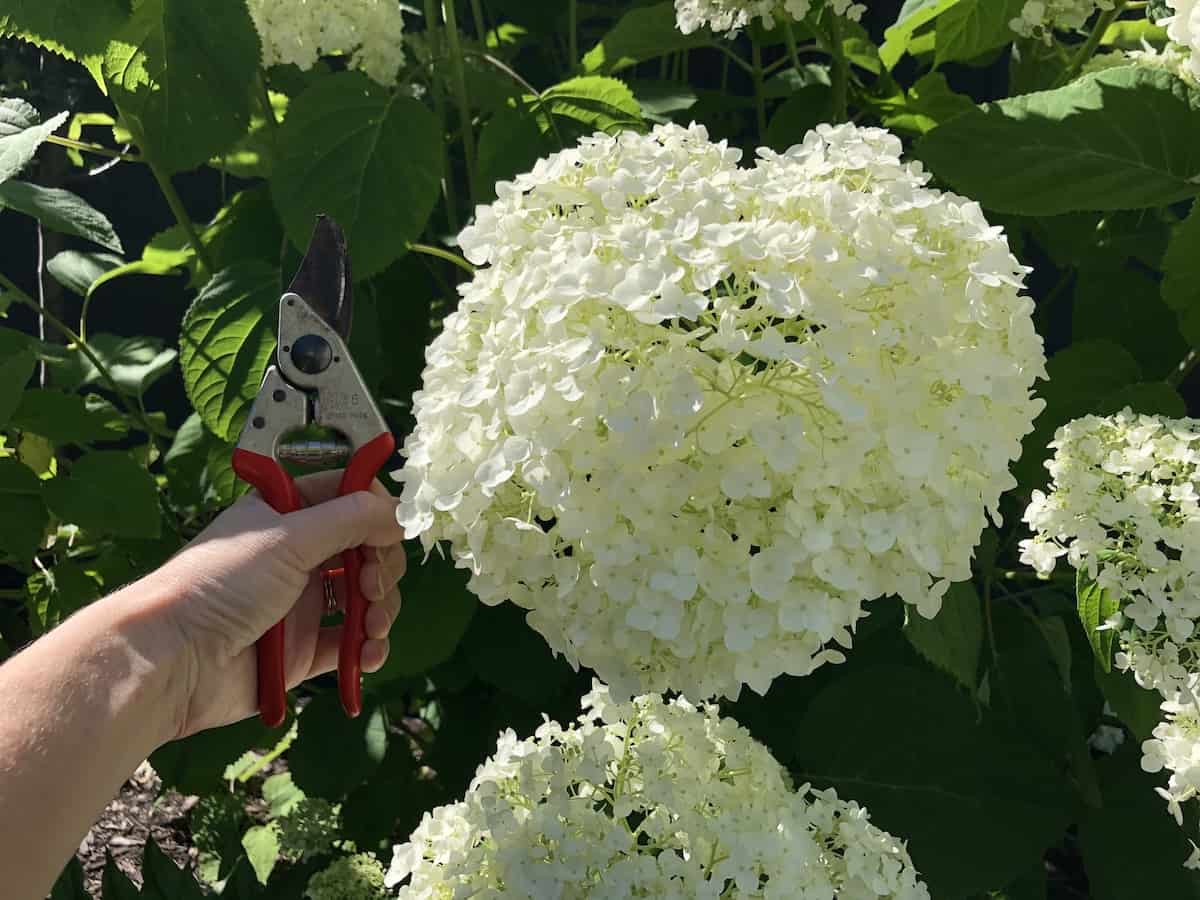
Some hydrangeas can’t change color
Only certain hydrangea species have the ability to change flower color. Most color-changing hydrangeas are varieties of Hydrangea macrophylla (bigleaf hydrangea). There are also Hydrangea serrata (mountain hydrangea) cultivars that change color with ease. Other popular species like panicle, oakleaf, and smooth hydrangea do not have the ability to change flower color.


